CARTAS A THEO DE VINCENT VAN GOGH/ (Spanish-English)
(Edited)
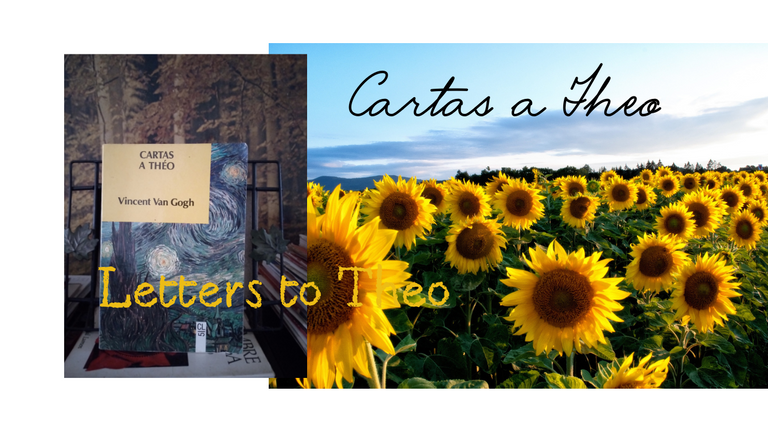
CARTAS A THEO
Hace algunos meses inicié una serie dedicada a las cartas de escritores y artistas y no había vuelto a publicar un nuevo post sobre el tema debido a que he estado leyendo las cartas de Van Gogh a su hermano Theo, una amplia correspondencia que se inicia en 1873 hasta el año de su muerte en 1890. Es un documento extraordinario para seguir su biografía, las ciudades donde vivió, pues fue un artista viajero, vivió en varios países y ciudades, Amsterdam, Londres, París, Bruselas, Etten; pero así también el proceso de formación del artista holandés.
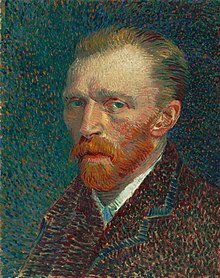
Su padre fue un austero pastor protestante. El pintor holandés apenas tuvo educación formal, decidió abandonar los estudios definitivamente cuando tenía 15 años. Al año siguiente, en 1869, comienza a trabajar como aprendiz en una compañía internacional de comercio de arte, Goupil & Co., de la que su tío Vincent era socio. En los años siguientes, trabajó como marchant de obras de arte en Londres, y en mayo de 1875 llega por primera vez a París, donde crece su amor al arte.
Pero en 1878 es despedido por querer imponer sus gustos en la venta de las obras, tenía un carácter difícil y un temperamento fuerte; pero su hermano menor, Theo inició en la compañía su trabajo como marchant y años después venderá las obras de su hermano y lo ayudará a sobrevivir en momentos de penuria económica. Algunas de sus obras que más me gustan o conmueven no son los paisajes que pintó, son esas pinturas de espacios cotidianos, su pequeña habitación en Arles, su pintura de unas botas viejas, que retratan la vida de pobreza que vivió, son obras honestas que no se exhibieron en los grandes salones.
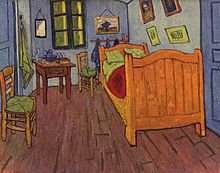
El dormitorio en Arles 1888 Fuente
Dando continuidad a mis post sobre cartas de escritores y artistas quiero compartir algunos fragmentos del libro “Cartas a Theo”, de la edición de Editorial Labor, 1992, que considero que pueden ser útiles para los hivers que se inician en el campo artístico. El artista holandés fue un acucioso aprendiz, además de ver y estudiar las obras de grandes maestros de la pintura, detallar su técnica, y aplicarlas a sus propios bocetos y obras, también leyó libros sobre pintura y de grandes escritores.
En una carta escrita en Laeken, el 15 de noviembre de 1878, escribe sobre el arte y la belleza, que lo acompañará toda su vida, que lo motivará siempre. Por años se dedicará a ver pinturas a las ciudades donde llega, como parte de su formación como pintor, en su hermano Theo encontrará siempre un interlocutor:
Cuántas bellezas en el arte, con tal de poder retener lo que se ha visto. No se está nunca entonces sin trabajo ni verdaderamente solitario, jamás solo.
Antes de dedicarse por entero a la pintura Van Gogh fue predicador durante varios años, en sus cartas a su hermano Theo hace reflexiones al respecto. En una carta escrita desde Amsterdan el 3 de abril de 1878 habla sobre su vocación como predicador, su aprendizaje para orientar a sus feligreses, es aún muy joven, pero ya se deja ver su temperamento pasional y su gusto por aprender:
El que vive sinceramente y encuentra penas verdaderas y desilusiones, que no se deja abatir por ellas, vale más que el que tiene siempre el viento en popa y que solo conoce una prosperidad relativa. (...) En lo que me concierne debo tomarme un buen predicativo, que tenga algo bueno que decir y que pueda ser útil en el mundo. (...) cometeremos probablemente también gruesas faltas y haremos malas acciones, pero es verdad que es preferible tener el espíritu ardiente, aunque se deban cometer más faltas, que ser mezquino y demasiado prudente. Es bueno amar tanto como se pueda porque ahí radica la verdadera fuerza, y el que mucho ama realiza grandes cosas y se siente capaz, y lo que se hace por amor está bien hecho. (...) Porque la vida es corta y el tiempo pasa ligero; si nos perfeccionamos en una sola cosa y la comprendemos bien, adquirimos por añadidura la comprensión y el conocimiento de muchas otras cosas
En sus cartas también expresa no estar de acuerdo con los académicos y sentirse “fuera de lugar”, pero otros grandes pintores de la época, la mayoría de los impresionistas, también fueron rechazados en los salones académicos, que se mantenían anclados en los cánones clásicos del arte. Así lo expresa en una larga carta a Theo de julio de 1880:
Por mí, respecto a los académicos que no se parecen a aquellos otros académicos; pero los respetables son más raros de lo que se piensa a primera vista. Ahora, una de las causas por las cuales estoy fuera de lugar -porque durante años he estado desplazado -es simplemente porque tengo otras ideas que las de esos señores que dan los puestos a los sujetos que piensan como ellos. No es una sencilla cuestión de toilette, como se me ha reprochado hipócritamente, es una cuestión más seria, te lo aseguro.
En la misma carta de 1880 hace referencia a su amor por los libros y hace una interesante vínculo entre escritores y pintores, lo que indica que también la lectura conformó su imaginario como artista:
Hay muchas cosas que se trata de creer y amar, hay algo de Rembrandt en Shakespeare y de Correggio en Michelet y de Delacroix en Víctor Hugo y después hay algo de Rembrandt en el Evangelio y algo del Evangelio en Rembrandt. (...) Si ahora puedes perdonar un hombre que ahonda en los cuadros, admite también que el amor por los libros es tan sagrado como el de Rembrandt, y hasta pienso que los dos se complementan.
Luego hace referencia a Shakespeare en particular y a su necesidad de ser útil, de que el hermano no lo catalogue como un “haragán”, sino como alguien que se está formando con gran esfuerzo. Suele ser el mayor reto de todo creador, vencer los malentendidos, la soledad y lograr que su trabajo sea reconocido. Por años el pintor holandés se esforzará sin lograrlo en vida:
Dios mío, qué hermoso es Shakespeare. ¿Quién es tan misterioso como él? Su palabra y sus modos equivalen a un pincel tembloroso de fiebre y de emoción. Pero hay que aprender a leer, como debe aprenderse a ver y aprender a vivir.
Por tanto, tú no debes pensar que reniego de esto o aquello: soy una especie de fiel en mi infidelidad y aunque cambiado soy el mismo y ni tormento no es otro que este: ¿Para qué podría yo servir?¿No podría yo ser útil de alguna manera? ¿Cómo podría yo saber más y ahondar tal o cual tema?
(...)Te escribo un poco al azar lo que me viene a la pluma, me sentiría muy contento si de alguna manera tú pudieras ver en mí algo más que un haragán.
En diversas cartas reitera su perseverancia en aprender, en mejorar su trabajo como pintor, aún a pesar de las grandes penurias que vivió, su trabajo estético está unido a una ética, perseverar en su trabajo, con pasión, buscando mejorar su técnica:
foto fue tomada con la cámara de mi teléfono móvil del libro "Cartas a Theo", editorial Labor, 1992
foto fue tomada con la cámara de mi teléfono móvil del libro "Cartas a Theo", editorial Labor, 1992
English version
( )
)
Photo taken with my mobile phone camera from the book "Cartas a Theo", editorial Labor, 1992
Photo taken with my mobile phone camera from the book "Cartas a Theo", editorial Labor, 1992
el tema y no las has leído. Gracias por tu lectura.
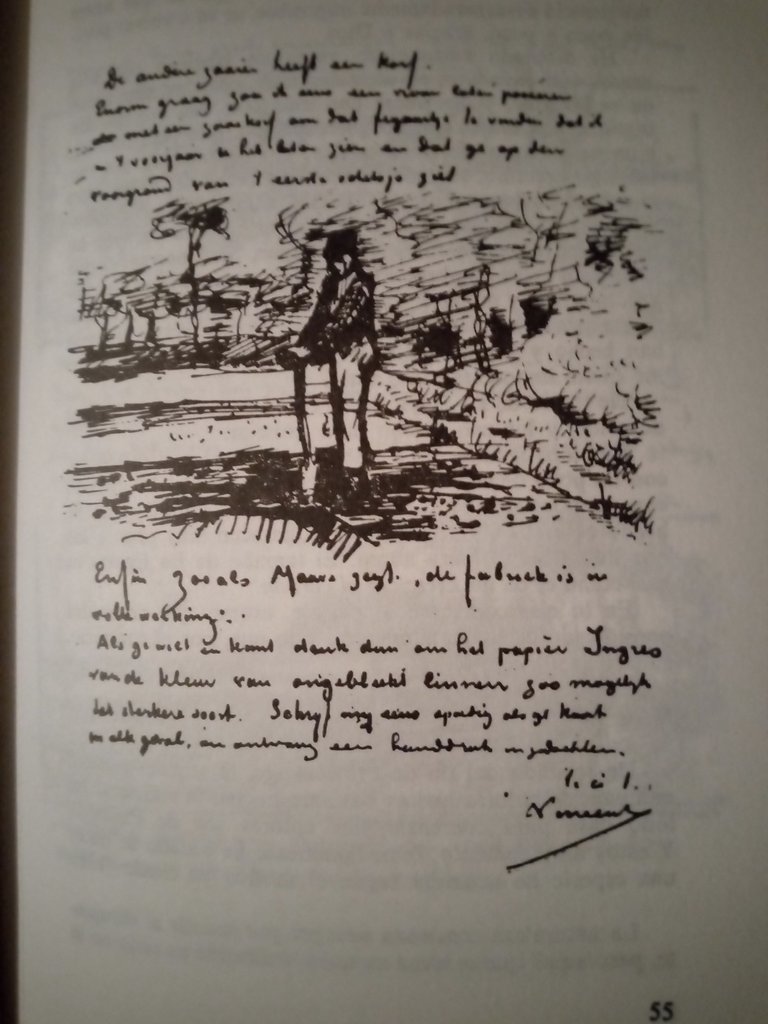
Ha sido sin embargo en esta miseria cuando he sentido renacer mis energías y me he dicho: de cualquier modo, yo surgiré todavía, volveré a coger el lápiz que abandoné en mi decaimiento y volveré nuevamente al dibujo: por lo que me parece, todo ha cambiado para mí y mientras tanto, estoy en camino y mi lápiz se ha vuelto más dócil y parece volverse más cada día. (Cuesmes, 20 de agosto de 1880)
Casi todos los días tengo algún modelo, un viejo comisionista, o algún obrero, o un pilluelo que hago posar. El domingo próximo tendré tal vez uno o dos soldados que vendrán a posar. Y puesto que ya no estoy de mal humor, me formo la idea de ti y de todo el mundo en general, completamente distinta y mejor. También he vuelto a dibujar un paisaje, aunque fuera un matorral, cosa que no había hecho desde hacía mucho tiempo. (Bruselas, enero de 1881)
Será necesario que dibuje sin cesar hombres con la azada, sembradores, labriegos, hombres y mujeres. Que examine y estudie todo lo que forma parte de la vida en el campo. Como tantos otros lo hhan hecho y lo hacen aún. Frente a la naturaleza, ya no me siento impotente como antes. (Etten, septiembre de 1881)
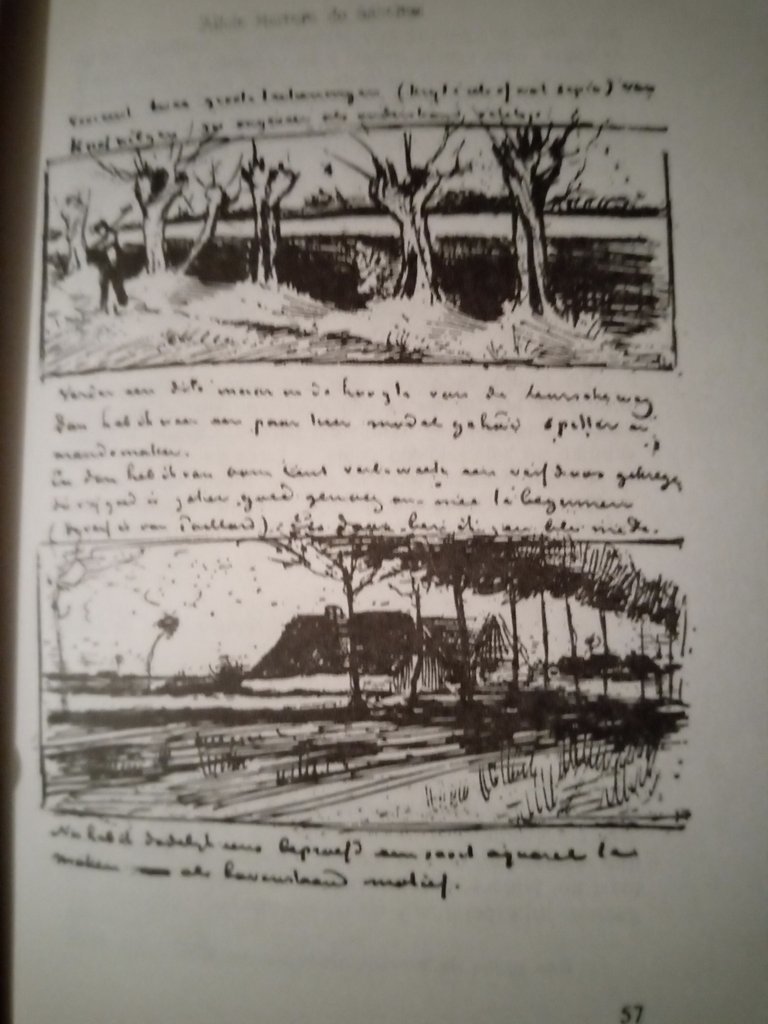
Espero que te haya sido útil esta nueva entrada dedicada a las cartas de escritores y artistas. Hasta una próxima oportunidad. Te comparto el link de la entrada previa que escribí en homenaje al pintor holándes Vincent Van Gogh y las otras entradas que he dedicado a cartas de escritores y artistas, por si te interesa el tema y no las has leído. Gracias por tu lectura.
https://peakd.com/hive-111516/@beaescribe/homenaje-a-vincent-van-gogh-spa-eng
https://peakd.com/hive-179291/@beaescribe/cartas-a-un-joven-poetaletters-to-a-young-poet-spa-eng
Contenido original, especialmente escrito para Hive. En las fotos que lo ilustran se indica la fuente.

Translation to english Google Traductor
LETTERS TO THEO
A few months ago I started a series dedicated to the letters of writers and artists and I had not published a new post on the subject since I have been reading Van Gogh's letters to his brother Theo, an extensive correspondence that began in 1873 until the year of his death in 1890. It is an extraordinary document to follow his biography, the cities where he lived, as he was a traveling artist, he lived in various countries and cities, Amsterdam, London, Paris, Brussels, Etten; but also the training process of the Dutch artist.

His father was an austere Protestant pastor. The Dutch painter hardly had a formal education, he decided to drop out permanently when he was 15 years old. The following year, in 1869, he began working as an apprentice in an international art trading company, Goupil & Co., in which his uncle Vincent was a partner. In the following years, he worked as an art dealer in London, and in May 1875 he arrived in Paris for the first time, where his love of art grew.
But in 1878 he was fired for wanting to impose his tastes in the sale of works, he had a difficult character and a strong temperament; but his younger brother, Theo, began his work as a dealer in the company and years later he will sell his brother's works and help him survive in times of economic hardship. Some of his works that I like or move the most are not the landscapes he painted, they are those paintings of everyday spaces, his small room in Arles, his painting of some old boots, which portray the life of poverty he lived, they are honest works that were not exhibited in the great halls.
(
 )
)
The bedroom in Arles 1888 Source
Giving continuity to my post on letters from writers and artists, I want to share some fragments of the book "Letters to Theo", from the Editorial Labor edition, 1992, which I consider may be useful for hivers who are starting out in the artistic field. The Dutch artist was a diligent apprentice, in addition to seeing and studying the works of great painting masters, detailing their technique, and applying them to his own sketches and works, he also read books on painting and great writers.
In a letter written in Laeken, on November 15, 1878, he writes about art and beauty, which will accompany him throughout his life, which will always motivate him. For years he will dedicate himself to seeing paintings in the cities where he arrives, as part of his training as a painter, in his brother Theo he will always find an interlocutor:
How many beauties in art, as long as they can retain what has been seen. You are never then without work or truly lonely, never alone.
Before devoting himself entirely to painting, Van Gogh was a preacher for several years. In his letters to his brother Theo, he reflects on the matter. In a letter written from Amsterdam on April 3, 1878, he talks about his vocation as a preacher, his learning to guide his parishioners, he is still very young, but his passionate temperament and his taste for learning can already be seen:
He who lives sincerely and finds true sorrows and disappointments, who does not let himself be dejected by them, is worth more than he who always has the wind in his tail and who only knows relative prosperity. (...) As far as I am concerned, I must take a good predicative, one that has something good to say and that can be useful in the world. (...) We will probably also commit gross faults and do bad deeds, but it is true that it is preferable to have an ardent spirit, even if more faults must be committed, than to be petty and overly prudent. It is good to love as much as possible because that is where true strength lies, and those who love a lot do great things and feel capable, and what is done for love is well done. (...) Because life is short and time passes quickly; if we perfect ourselves in a single thing and understand it well, we additionally acquire the understanding and knowledge of many other things
In his letters, he also expressed that he did not agree with the academics and felt "out of place", but other great painters of the time, most of the impressionists, were also rejected in academic salons, which remained anchored in the classical canons of art. This is how he put it in a long letter to Theo from July 1880:
For me, regarding the academics who don't look like those other academics; but the respectable ones are rarer than one might think at first glance. Now, one of the reasons why I am out of place -because for years I have been displaced -is simply because I have other ideas than those of those gentlemen who give jobs to people who think like them. It is not a simple question of toilette, as I have been hypocritically reproached, it is a more serious question, I assure you.
In the same letter from 1880, he refers to his love for books and makes an interesting link between writers and painters, which indicates that reading also shaped his imagination as an artist:
There are many things that are about believing and loving, there is something of Rembrandt in Shakespeare and of Correggio in Michelet and of Delacroix in Victor Hugo and then there is something of Rembrandt in the Gospel and something of the Gospel in Rembrandt. (...) If you can now forgive a man who delves into paintings, he also admits that love for books is as sacred as Rembrandt's, and I even think that the two complement each other.
Then he makes reference to Shakespeare in particular and his need to be useful, not to be labeled by the brother as a “lazy man”, but as someone who is forming himself with great effort. It is usually the biggest challenge for every creator, to overcome misunderstandings, loneliness and get their work recognized. For years the Dutch painter will strive without achieving it in life:
My God, how beautiful Shakespeare is. Who is as mysterious as him? His word and his ways are equivalent to a brush trembling with fever and emotion. But one must learn to read, as one must learn to see and learn to live.
Therefore, you must not think that I deny this or that: I am a kind of faithful in my infidelity and although changed I am the same and my torment is none other than this: What use could I be? Could I not be useful in some way? How could I know more and delve into this or that topic?
(...) I write to you a little at random what comes to my mind, I would feel very happy if somehow you could see in me something more than a lazy person.
In various letters he reiterates his perseverance in learning, in improving his work as a painter, even despite the great hardships he experienced, his aesthetic work is linked to an ethic, persevering in his work, with passion, seeking to improve his technique:

It was, however, in this misery that I felt my energies reborn and I told myself: in any case, I will still emerge, I will pick up the pencil that I abandoned in my decline and I will return to drawing again: it seems to me that everything has changed for me and meanwhile, I am on my way and my pencil has become more docile and seems to become more docile every day. (Cuesmes, August 20, 1880)
Almost every day I have a model, an old commission agent, or a worker, or a urchin that I pose. Next Sunday I may have one or two soldiers come to pose. And since I'm not in a bad mood anymore, I have a completely different and better idea of you and everyone in general. I have also redraw a landscape, even if it was a bush, which I had not done for a long time. (Brussels, January 1881)
It will be necessary for me to draw endlessly men with the hoe, sowers, peasants, men and women. Examine and study everything that is part of life in the field. As so many others have done and still do. Faced with nature, I no longer feel helpless as before. (Etten, September 1881)

I hope this new entry dedicated to letters from writers and artists has been useful to you. Until a next opportunity. I am sharing the link to the previous post that I wrote in homage to the Dutch painter Vincent Van Gogh and the other posts that I have dedicated to letters from writers and artists, in case you are interested in the subject and have not read them. Thanks for your reading.
el tema y no las has leído. Gracias por tu lectura.
https://peakd.com/hive-111516/@beaescribe/homenaje-a-vincent-van-gogh-spa-eng
https://peakd.com/hive-179291/@beaescribe/cartas-a-un-joven-poetaletters-to-a-young-poet-spa-eng
Original content, specially written for Hive. In the photos that illustrate it, the source is indicated.

0
0
0.000
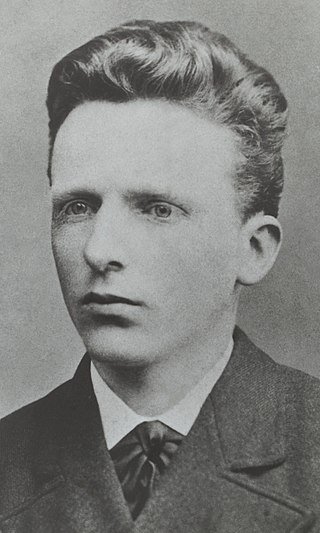
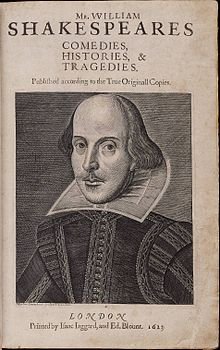
Congratulations @beaescribe! You have completed the following achievement on the Hive blockchain And have been rewarded with New badge(s)
Your next target is to reach 1500 upvotes.
You can view your badges on your board and compare yourself to others in the Ranking
If you no longer want to receive notifications, reply to this comment with the word
STOPTo support your work, I also upvoted your post!
Check out our last posts: